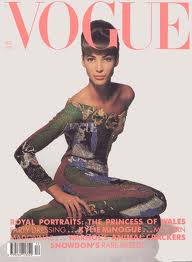I’m beginning to tire of the word ninja* being thrown around whenever anybody wants to communicate the idea that someone is good at something (“My accountant is a number ninja!” “My barista is a shot-pulling ninja!”), but my aunt is a fair trade ninja. Having spearheaded her town’s transformation into a fair trade community and currently sitting as a Canadian Fair Trade Network board member, she really kicks some corporate capitalist butt while remaining one of the gentlest souls I know. Anyway, she said something once that I’d like to recall on this dark day.**
We were discussing Wal-Mart over lunch and she mentioned how much she hates their latest slogan, “Save Money, Live Better”.
“It totally offends me,” she stated in an uncharacteristically aggressive tone, crushing the aluminum pop can in her clenched fist.***
And I get it. What exactly does a multi-billion dollar corporation whose revenue is derived exclusively from exploiting other people’s misery mean by the phrase, “Live Better”? A more apt slogan might be, “Save money! Surround yourself with more cheap product this month than the poor kid lacing up your sweatshop-produced baseball could go through in seventy-six lifetimes!” At the same time, of course, the images they’re running through the commercial make you feel like “Live Better” means “be the perfect mom with the cute hair who lives in That House with the Big Baseboards and Old-School Heating Grates that remind you just vaguely enough of your pleasant childhood to make you feel like you’ve just consumed a big heaping bowl of your mom’s homemade mac and cheese”.
It got me thinking about the incredible slew of corporate ads perpetuating the myth that if we buy more stuff, it will somehow fulfill us on a cosmic level.
The examples you’re about to read are taken directly from advertising I’ve seen at the mall, around town and online. They haven’t been exaggerated or re-worded or any way.
“Expect more, pay less.” More– yes, we can definitely expect more. We can expect more crap on our driveway at our next garage sale. But hey, who doesn’t enjoy bartering with the neighbourhood Weird Guy over a plastic wastebasket?
“Fill your drawers.” Amusing potty double-entendre aside, this slogan promotes the untruth that empty space in one’s closet is somehow an undesirable thing. Space in my closet is something I have worked hard to achieve and maintain over the past couple of years. To me, space represents overcoming compulsive shopping habits; it represents a streamlined and intentional collection of garments that reflect who I am as a person. When applied to life on a larger scale, space promotes wellbeing– healthy relationships, healthy bodies, healthy minds and healthy spirits all result from a healthy margin of space. So I’ll take a pass on ‘filling my drawers,’ thanks.
“You don’t not need it.” I don’t even know where to begin, other than to say that if a student used this sentence in one of my classes, there would be some red pen involved. Beyond its unbearable use of the double negative, I feel that the question really screaming to be answered here is why? Why, in the name of all that is holy, would I or should I ever spend money on something because I ‘don’t not need it’? What sort of consumerist Purgatory are we living in when clothing retailers feel entitled to carve out this amorphous, pseudo-syllogistic no-man’s-land in our minds just to sell us one more thing we never knew we didn’t not need? Anyway, even if I do decide to hang onto my credit card information long enough to play along and bother unpacking this stupid argument, it turns out they’re telling me I do need it, which I don’t, so once again, and finally, WHY.
To all the marketing executives who will never read this, here’s a thought: maybe you could just create a high-quality, long-lasting, ethically sourced, worthwhile product or service that I would like to spend money on in the first place.
*I re-read this line and added italics so nobody would think I was talking about a little word ninja being tossed back and forth. No word ninjas were harmed in the making of this post.
** The day when, as a certain comedian put it, we can all trample each other to death the day after being thankful for what we have (that is, if you live in America. Here in Canada, Thanksgiving is such a distant memory that the trampling’s totally cool).
***This anecdote may have been embellished for narrative effect. Maybe the can-squishing part.

































